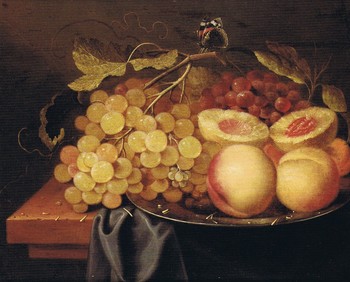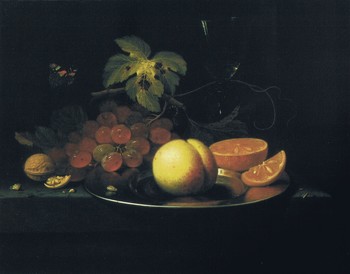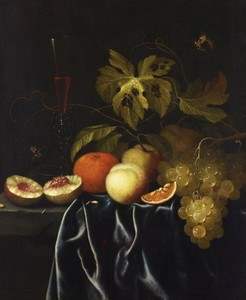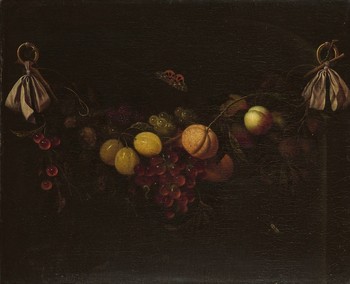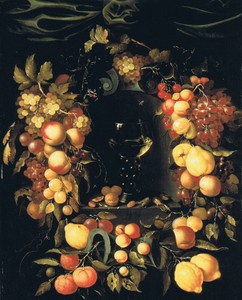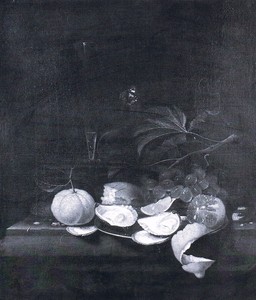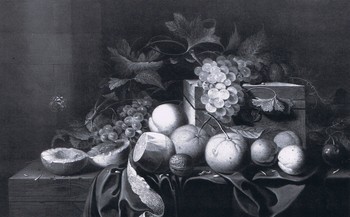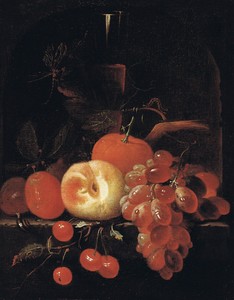8.000 €
A fruit still life in a tazza on a stone ledge
Oil on canvas : 48,6 X 39,1 cm
Unsigned
Wooden sculpted frame : 60,5 X 50,1 cm
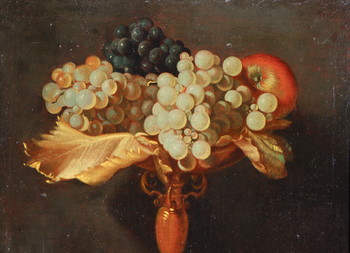
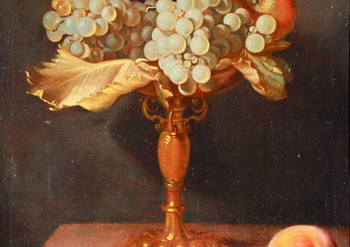
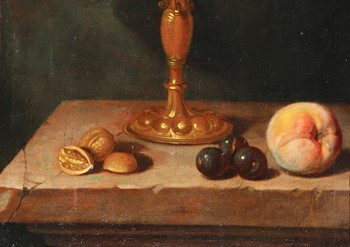
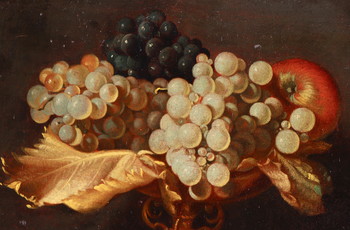
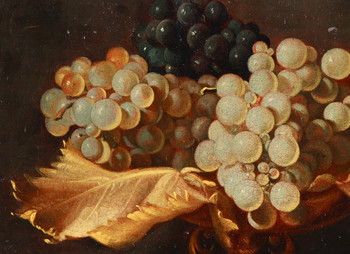
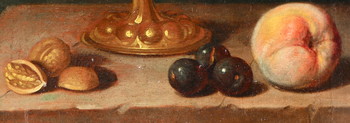
In short
Borman was most probably a pupil of Laurens Craen in Middelburg during the early 1650s. Borman is later documented in Leiden, The Hague and finally Amsterdam, where he moved to in 1659.
Typical of Borman are the thin leaves with wavy margins and
strongly pronounced veins.
The broken stone ledge holds a Vanitas message; it makes us reflect upon the transient character of life.
About Johannes Borman
Dutch painter
The Hague circa 1620/25 – 1660/79 Amsterdam
Still life painter.
Borman’s small oeuvre mainly consists of fruit pieces, but there are also some examples with flowers known.
Dated works known between 1653 and 1660.
His main inspiration seems to have been the work of Laurens Craen (possibly The Hague circa 1620 – 1663/1670 possibly Middelburg).Craen had probably worked near Jan Davidsz. de Heem in Antwerp in the mid-1640s. De Heem, who had been active in Leiden, Utrecht and in Antwerp, was the most famous still life painter of the Low Countries of the 17th century.
Craen was active in Middelburg from 1649. In view of Borman’s strong dependence on Craen’s work, it would seem likely that he spent some time in Middelburg as Craen’s pupil, perhaps during the early 1650s.
Borman was a member of the Painter’s Guild in Leiden in 1658. He had apparently already settled in Leiden in 1653.
But in 1659 he was already a citizen and member of the Painter’s Guild in Amsterdam. In that same year he is also still mentioned as a painter active in The Hague.
Typical of Borman are the thin leaves with wavy margins and strongly pronounced veins.
Why should you buy this painting?
Because it is a small gem set in an ancient wooden sculpted frame.
Comparative paintings
Click photos for more details

